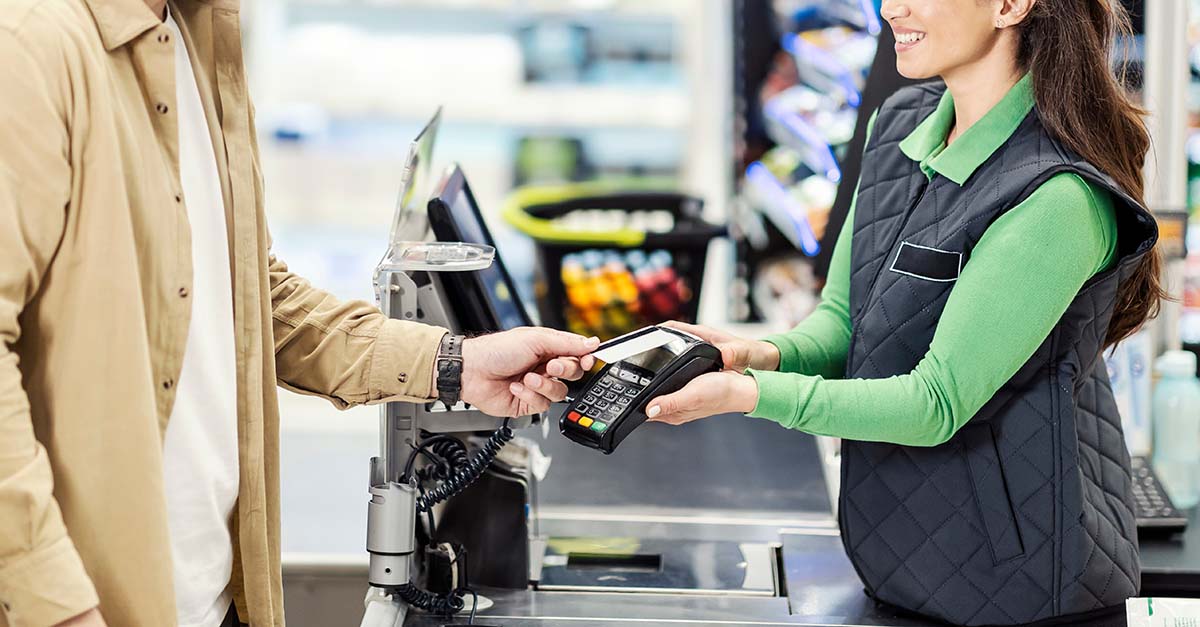Variable pricing strategies and consumer perceptions
A number of variable pricing strategies are making their way into public consciousness. Here’s what you need to know.

Dr. Thomas Weinandy
Variable pricing strategies and consumer perceptions


Movie theaters discount the cost of matinees in order to attract customers during slower movie times. Airlines and ticketing platforms automatically adjust their prices based on consumer demand.
Variable pricing strategies might feel new because of the recent buzz, but retailers have been employing these concepts for years. Today, consumers are becoming more aware of variable pricing — and our survey got their thoughts.
Variable pricing strategies and the consumer perceptions of those strategies are highlighted in Upside’s inaugural Consumer Spend Report. To dive deeper into our survey responses, continue reading here — or get your copy of the full report, featuring data from over a billion retail transactions and feedback from over 7,000 consumers.
Variable pricing strategies
Exactly what kinds of pricing options are retailers implementing? Here, we’ll explore two of them further.
Dynamic pricing: What is it, and what do consumers think?
Dynamic pricing is a way for retailers to optimize revenue by increasing or decreasing prices based on business needs.
Retailers usually pursue dynamic pricing in order to maximize profit. They consider the state of their business at a given time — perhaps they have spare resources, or perhaps they have a line out the door — and make pricing changes based on that information.
About 51% of survey respondents say they understand how dynamic pricing works, whereas only 17% said they did not. (32% were uncertain.) Additionally, 42% say they are currently experiencing dynamic pricing in their daily lives.
Opinions on dynamic pricing are mixed, however. That’s partially due to consumers’ conflation of dynamic pricing with surge pricing, a specific kind of dynamic pricing in which the price only increases during busy times. Recent data from Ipsos showed only about one in three American consumers were willing to pay surge prices for various products and services. No matter the item, consumers generally don’t want to pay more for a given item just because of when they buy.
Wendy’s unwittingly became the poster child for dynamic pricing in early 2024 after announcing on an earnings call that it would begin testing the strategy. Though the brand only intended to lower prices during slower periods — not raise them during busy ones — the online discourse spun out of control.
Indeed, dynamic pricing often stirs public controversy. People typically think of the strategy as price gouging. But to be clear, dynamic pricing can be executed thoughtfully, and when it is, economists say it actually creates welfare improvements over uniform pricing by allowing for the optimal allocation of limited resources. In the end, though, the conversation around dynamic pricing is driven entirely by perception — and that negative perception created a PR firestorm, leaving Wendy’s scrambling to explain that it didn’t intend to raise its prices.
Here is a closer look at the consumer perceptions of dynamic pricing:
.png)
Looking more specifically, views tend to diverge a bit by age. Whereas 45% of the youngest group of respondents — those between ages 18 and 24 — said they are okay with retailers using dynamic pricing, only 19% of respondents over age 65 agreed with that statement. Similarly, respondents from the younger group were much more likely to say they prefer retailers who use dynamic pricing — 39% agreed with the statement above, compared to 11% of respondents from the oldest group.
Personalized promotions: The benefits, and why they beat dynamic pricing
There is a type of dynamic pricing that actually presents like more of an alternative — and that consumers view more favorably: personalized promotions. Those promotions change based on each individual consumer’s likes, needs, and interests, rather than those of the business; they only decrease the nominal price, so most consumers do not conflate it with surge pricing.
Whereas only 25% of respondents said they prefer retailers who use dynamic pricing, about 45% said they prefer retailers who use personalized promotions. Meanwhile, 59% said that personalized promotions can be good for both retailers and shoppers. Only 33% of respondents thought that dynamic pricing would be mutually beneficial.
By providing customers with the exact amount needed to influence a transaction at their business, retailers can win more foot traffic without cannibalizing sales they expected to make. For that reason, leading economists estimate that businesses can earn an additional 19% profit from personalized promotions. Nationally, that means the brick-and-mortar retail sector is currently missing out on more than $640 billion of profit due to static discounts.
The future of variable pricing strategies in retail
Legal and ethical implications
Since consumers have mixed feelings about dynamic pricing, rolling it out clearly comes with risks in that regard alone. But there is an additional reason that dynamic pricing (and surge pricing in particular) is attracting extra scrutiny — in certain instances, it might run afoul of the law.
For one, the FTC is investigating whether the practice raises prices for particular groups of consumers; a spokesman specifically cited women and rural consumers in a statement on the investigation. Additionally, the Competition and Markets Authority in the U.K. has begun its own investigation into Ticketmaster following a chaotic rollout of tickets for the upcoming European tour of the band Oasis.
While much remains to be determined, it’s clear at this point that government regulators want to do their due diligence before these strategies become commonplace. The findings from the active investigations are to be determined, but a 2018 FTC statement showed that there’s a high burden of proof when it comes to proving price discrimination. Absent “unfair or deceptive conduct,” dynamic pricing and personalized promotions provide “no basis for intervention.”
Balancing profit and customer satisfaction in pricing
Of course, brick-and-mortar retailers need to make money to stay in business for the long term; if they don’t generate enough profit, they’ll have to close their doors. It makes sense that retailers want to maximize their profit, but customer satisfaction has to be weighted equally in the business owner’s set of considerations.
When thinking about how they price their goods and services, retailers should consider the consumer perspective, especially their wariness of surge pricing. Profit is important, but finding the balance between profit and customer happiness is paramount.
Get more consumer survey data
These insights on the consumer perceptions of variable pricing strategies come from an excerpt from Upside’s inaugural Consumer Spend Report 2024. Get your copy of the full report.
Share this article:
Dr. Weinandy is a Senior Research Economist at Upside, providing valuable insights into consumer spending behavior and macroeconomic trends for the fuel, grocery, and restaurant industries. With a Ph.D. in Applied Economics, his academic research is in digital economics and brick-and-mortar retail. He recently wrote a book on leveraging AI for business intelligence.
Request a demo
Request a demo of our platform with no obligation. Our team of industry experts will reach out to learn more about your unique business needs.

















